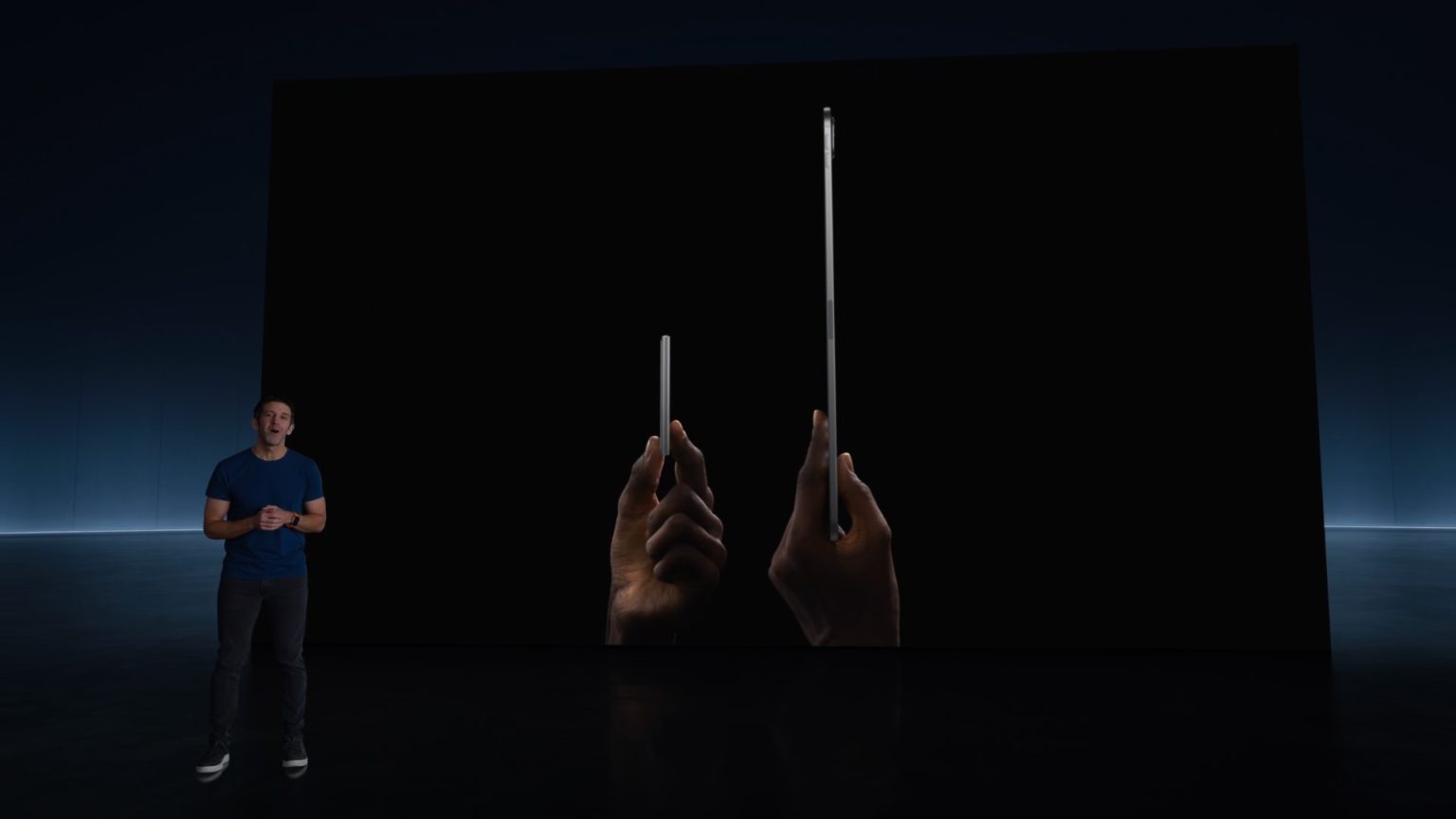Apple is preparing to introduce several super-thin models of its devices over the next several years akin to the M4 iPad Pro, the company’s thinnest product ever. The iPhone 17 lineup will include one svelte model with similar changes coming to future Apple Watch and MacBook Pro generations, reports Bloomberg‘s Mark Gurman.
In the latest edition of the weekly Power On newsletter, Gurman explains that Apple is returning to its old days of making products as thin and light as possible, which has begun taking place with the M4 iPad Pro. After years of making devices thicker and heavier for better cameras and higher battery capacities, Apple is set to reverse this trend with several new devices it has planned over the next few years.
The iPhone 17 lineup will be among the first to take advantage of this new approach. The report states that Apple is preparing a “significantly skinnier” iPhone 17 model, corroborating an earlier report from The Information about the existence of an all-new much thinner and lighter flagship iPhone that is likely to be marketed as the iPhone 17 Ultra. Several other reports refer to this iPhone as the “iPhone 17 Slim,” though this branding is likely nothing more than a placeholder name.

Discover new horizons, always connected with eSIM
Travel the world stress and hassle-free with the best eSIM service available. Enjoy unlimited data, 5G speeds, and global coverage for affordable prices with Holafly. And, enjoy an exclusive 5% discount.
Apple is also said to be working on slimmer Apple Watch and MacBook Pro models, though a release date for these devices remains unclear. Last year, rumors mentioned that Apple is working on an Apple Watch “Series X” revamp to commemorate the device’s 10th anniversary. This Apple Watch model was said to launch either this year or the next with changes including a much slimmer case design and a new magnetic band attachment system.
A redesigned MacBook Pro is likely to arrive much later than the slimmer iPhone 17 and Apple Watch models as Apple usually overhauls its laptops’ designs every five years or so. Recent rumors predict a redesign for the MacBook Pro around 2027 that could feature an OLED panel with touchscreen capabilities. The adoption of an OLED display and next-generation Apple silicon will introduce significant power consumption savings, theoretically allowing Apple to reduce the MacBook’s battery size while still maintaining the same performance and battery life.



